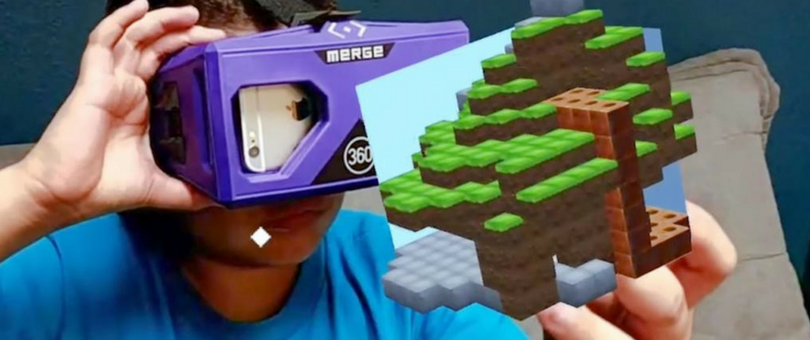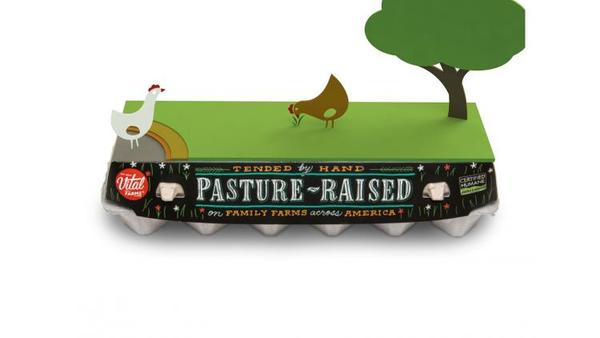 There’s little doubt that augmented reality (AR) is changing the retail industry. AR technology is enhancing the in-store experience, allowing brick-and-mortars to expand their reach, and helping marketers build buzz.
There’s little doubt that augmented reality (AR) is changing the retail industry. AR technology is enhancing the in-store experience, allowing brick-and-mortars to expand their reach, and helping marketers build buzz.
And consumers are coming to expect these innovations from retailers. Nearly 70% anticipate that retailers will launch an AR app within the next six months.
Some brands are fully embracing AR technology, incorporating it into their existing products, launching new AR-powered products, and livening up product packaging.
We chatted with Steve Curran, CEO of AR experience platform ROAR, who categorized two main ways retailers can incorporate AR into products: play and utility, as well as cross-selling. Let’s take a look:
Play
Adding an element of play to your AR product experiences is a form of entertainment or delight. This is an approach that can work for all kinds of retailers, whether your products are “fun” or not.
“Augmented reality can really extend the play value of a product and further establish that connection between the physical and digital experiences,” Curran says.
Unsurprisingly, this value has been recognized and leveraged by many retailers in the toy industry:
- LEGO: One of the retail brand’s earlier ventures was in 2010 when they used AR technology in store kiosks. Since then, they’ve launched AR apps that make it easier for customers to design their LEGO creations, video games, and products that integrate other products’ virtual versions.
- Hasbro: With Hasbro, this last toy fair they launched a number of products that bring the toys to life in new and interesting and exciting ways that you couldn’t do before (like this fancy Iron Man helmet).
- Merge Cube: “The Merge Cube is basically a four-sided cube that has an endless combination of experiences that can be built as an overlay on top of that cube that triggers an AR experience,” Curran says.
But those outside the toy industry are also adding elements of fun and gamification to their products with AR:

Image: Vital Farms
- Vital Farms: The organic food brand worked with ROAR to launch AR packaging on their line of eggs. “When you scan the egg carton top, a farm scene came to life and displayed illustrated chickens and told the story of which these eggs are special,” Curran says. “It’s a cute, fun interaction, but also useful in storytelling and having a novelty effect where people show it to their friends.”
- Smithworks Vodka: Another collaboration with ROAR, retail brand Smithworks Vodka also used its packaging to surprise and delight customers through AR. “Customers scan the bottle, and Blake Shelton, who’s the co-owner of the vodka brand, walks out from behind the bottle and gives you a personalized message based on the state that you’re scanning from,” says Curran. Customers could also enter a sweepstakes which extended the play value of the campaign. “Creating that kind of an event around it is one way to break through the clutter,” he says.
- Adidas: Global athletic apparel retailer Adidas turned sneakers into video game controllers.
- 19 Crimes Wine: Another alcohol brand, Australia-based 19 Crimes Wine launched an AR campaign where the packaging unlocked a series of stories about the infamous Australian criminals who inspired each wine. “They launched it around the holiday season which meant that people started buying the wine because they wanted to drop it on the Thanksgiving table and wowing their friends and family,” Curran says. “They used the power of storytelling to go from an obscure brand to a topical brand.”
- BIC: To extend its line of kid-friendly products, BIC dipped its toes into the toy industry with its Drawybook AR product.
- Starbucks: Starbucks has played with AR in a couple of ways. Digital overlays to their iconic cups and an immersive in-store experience in Shanghai. “They’re doing that in a social standing so that if somebody pulls out the app and is doing it in the Starbucks store, other people will see that, want to engage with a similar experience, and ideally want to unlock each of those experiences themselves,” Curran says.
Utility
Using AR in your products to provide value through utility is another core approach. This is one reason why in-store navigation through AR has become popular among many retailers, especially grocery stores and department stores.
When it comes to using AR in the products and packaging, there are plenty of opportunities to be helpful to your customers. Remember the keyword: helpful.
“If I’ve seen things fail in AR, it’s because of lack of a compelling reason and not providing the customer with enough information,” says Curran.
All kinds of retailers and retail brands are using AR in their products and packaging to provide utility:
- Hyundai: Hyundai has made a move to enhance the user guides for their automobiles through AR technology. The car brand replaced the printed paper manual with an AR-powered owner’s manual where car owners can use an app and their device camera to scan elements of the car and access support content. “Especially if you know nothing about cars, having this augmented reality layer of explanation that can use the camera view to just recognize something and tell you exactly what it is, versus having to match up illustrations or icons to what’s physically in front of you certainly makes a lot of sense,” Curran says.
- Bombay Sapphire: While alcohol brands have certainly leveraged the play aspect of AR, they’ve also harnessed it to provide utility to customers. Bombay Sapphire created labels for their liquor bottles that would provide recipes and other helpful information about using the products. This approach “is a different way to interact with the product that extends the customer’s connection to the experience,” says Curran.
- IKEA: Okay, so maybe IKEA hasn’t actually gone through with this application, but a Toronto-based designer mocked up an AR version of furniture assembly instructions. “That is a very practical use of AR where you’re using a combination of image recognition and a mixed reality view to help make the assembly process a lot easier,” Curran says.
Moving Forward With AR Technology and Your Products
For those retailers that want to test AR technology in their own products and packaging, Curran notes the challenges that brands still face.
“AR is still new,” he says. “And it still requires either the download of an app or an integration into an existing app.”
Retailers and brands still also need to educate consumers about the technology, the value, and how they can use it to enhance their product experience.
“I’ve seen promotions fail because there were too many assumptions made on the part of the manufacturer on what the level of education with customers is,” Curran says.
To counter this, come up with a strategy to educate your customers about the AR experience, the value it brings to them, and how easy it is to use.
“It’s really up to the manufacturer or retailer how they promote and create experiences that are valuable or unique, and then message that in the right way to make sure the customer knows about it.”
What ways have you seen AR technology integrated into products? How can you see AR technology enhancing your products?

